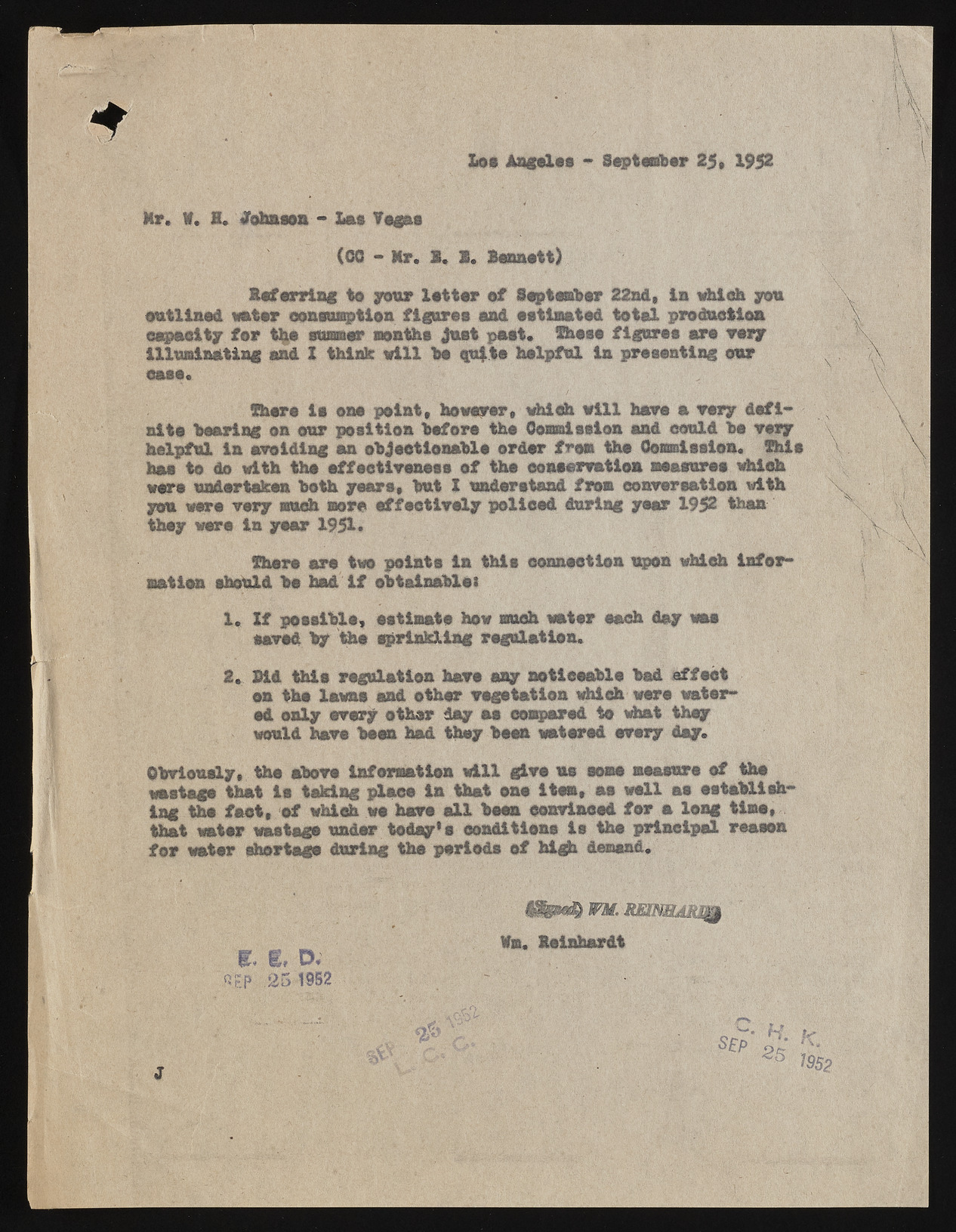Copyright & Fair-use Agreement
UNLV Special Collections provides copies of materials to facilitate private study, scholarship, or research. Material not in the public domain may be used according to fair use of copyrighted materials as defined by copyright law. Please cite us.
Please note that UNLV may not own the copyright to these materials and cannot provide permission to publish or distribute materials when UNLV is not the copyright holder. The user is solely responsible for determining the copyright status of materials and obtaining permission to use material from the copyright holder and for determining whether any permissions relating to any other rights are necessary for the intended use, and for obtaining all required permissions beyond that allowed by fair use.
Read more about our reproduction and use policy.
I agree.Information
Digital ID
Permalink
Details
More Info
Rights
Digital Provenance
Publisher
Transcription
Los Angeles - September 25, 1952 Nr. V. S. Johnson - Las Vegas (CO - Nr. S. X. Bennett) Referring to your letter ef September 22nd, in which you outlined water consumption figures and estimated total production capacity for the seamier months just poet* Xhese figures are very illuminating and I think will be quite helpful in presenting ear case. There la one point, however, which will have a very definite bearing on our position before the Commission and could ba waxy helpful in avoiding an objectionable order from the Commission. This has to do with the effectiveness of the conservation measures which were undertaken both years, but I understand from conversation with you were very much more effectively policed during year 1952 than they were in year 1951. There art two paints in this oonnsotion upon which information should bs had if obtainable! 1, If possible, estimate how much water each day mat saved by the sprinkling regulation. 2, Bid this regulation have any noticeable bad effect on the lawne and other vegetation which were watered only every other day as compared to what they would have been had they been watered every day* Obviously, the above information will give ns some measure of the wastage that is taking place in that one item, me well as establishing the faet, of which we have all barns convinced for a long time, that wata? wastage under today's conditions is the principal reason for water shortage during the periods ef high demand. % i m «EP 25 1952 I M Jrar. X B n m A g jQ Vm. Reinhardt m <?5 J 1952

